It's almost time for students to go back to school. What's new in Oklahoma education?
In a matter of days, school buses will roll out across the city, morning bells will ring and classrooms will fill once more.
The end of summer break and the start of another school year always bring a flurry of activity — organizing supplies and memorizing new schedules.
Moore Public Schools mother Kristi Jones said she knows things are brewing in the political scene, but her family is mainly focused on "getting back into the groove of normal" since COVID-19. With a high school senior and an eighth-grader, college applications and after-school activities are top-of-mind while the latest headlines fade to the background.
From her home in the Putnam City school district, Sky Collins stays on top of state politics. Her daughter is in special education, so Collins pays close attention to government funding for these services.
Parents who follow political news are exhausted by the polarized climate surrounding education, Collins said. For families who aren't concerned already, she said, it's only a matter of time before they notice a difference in their local schools.
"I think most parents are focused on the kitchen-table issues," Collins said. "But I think that as we go back into the classrooms and we see teacher shortages and we see these issues that are affecting directly our teachers and their students, that they start to think about those issues more."
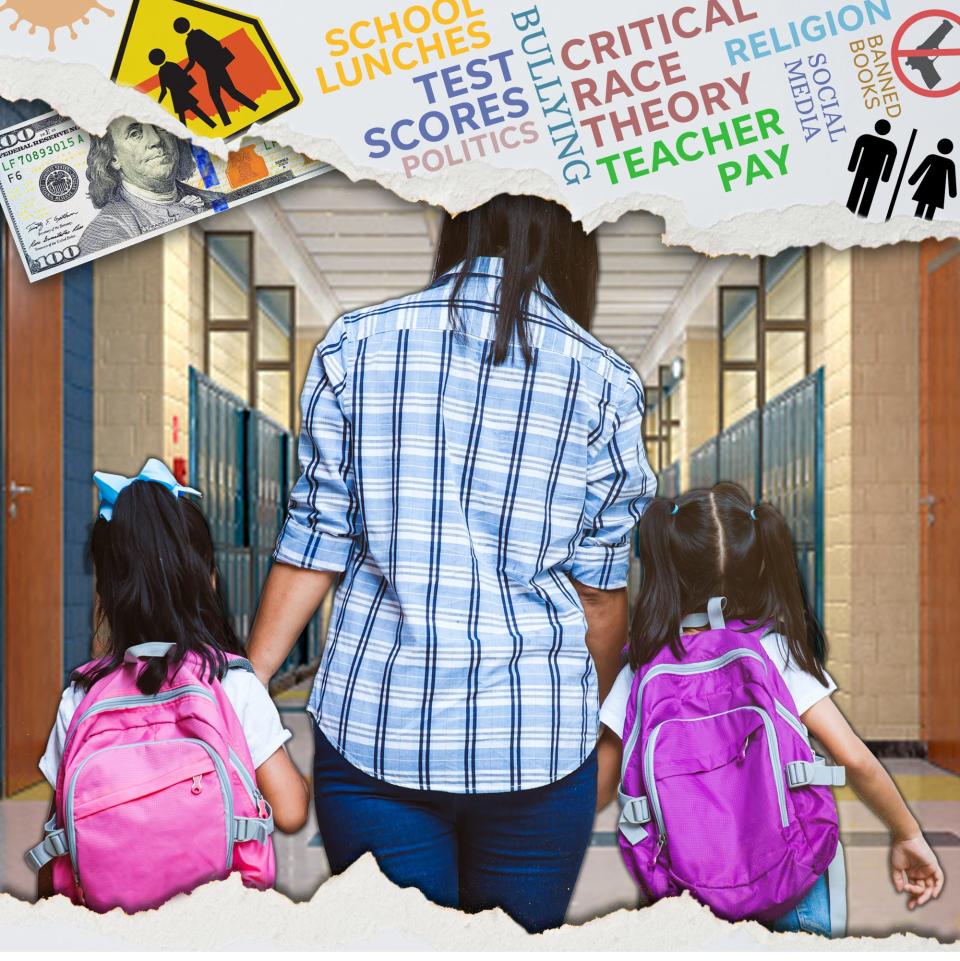
The 2023-24 academic year marks a new beginning for schools — on multiple fronts. A new leader is in charge of Oklahoma's public education system, with different rules and ideas from the administration that came before.
State lawmakers made education funding a particular focus during their 2023 legislative session. A swell of new funding for schools and teacher salaries is the result.
Some factors at play carried over from previous school years, as families and schools continue to deal with the fallout of a devastating global pandemic.
Parent's practical guide: What OKC parents need to know to get kids ready for school
New rules in place affecting school libraries, LGBTQ+ students
Oklahomans wondering about the ground-level impact of new leadership at the Oklahoma State Department of Education, take note: New sets of rules now govern school library book content and discussions on gender identity.
State schools Superintendent Ryan Walters introduced the rules earlier this year, and Gov. Kevin Stitt approved them in July, despite legal objections from the state attorney general.
The regulations threaten an accreditation downgrade for schools found to have pornographic material or sexualized content in their libraries.
In defining "pornographic," the rules borrow langauge from state law used to describe "obscene material," which is content that lacks serious literary or educational value when taken as a whole. It's rare for a book to meet that statutory definition because it requires cover-to-cover obscenity. No one has been prosecuted for distributing obscene material in Oklahoma in decades.
Sexualized content isn't strictly pornographic but contains "excessive sexual material," according to Walters' rules.
More: As the school year begins, more funding and optimism along with challenges
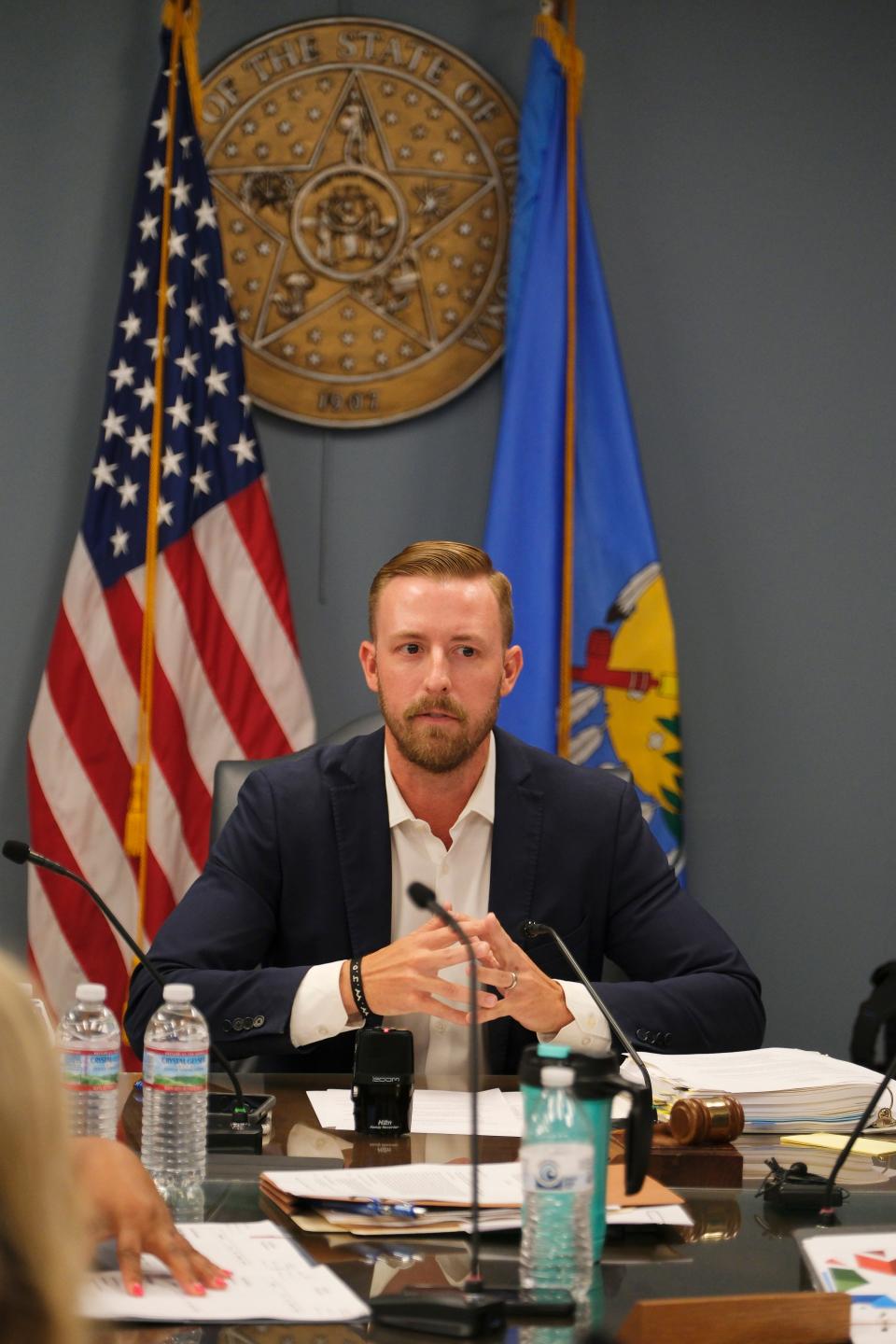
School employees are now required to notify a child's parents if a student changes their pronouns or gender identity. Those who fail to report risk an accreditation penalty to their district.
Some parents voiced support for the measure to prevent secret keeping between educators and students.
LGBTQ+ advocates opposed the requirement, saying it could force students to reveal their gender identity to their family before they're ready and safe to do so.
"School might be the only or last place that they have any safety or affirmation," said Nicole McAfee, executive director of the LGBTQ+ advocacy group Freedom Oklahoma. "We are taking that away from them and forcing educators in the process to make some really hard decisions about whether they are going to comply with this arbitrary rule or risk the safety of some of their most vulnerable students."
School funding, teacher pay get major boost from Oklahoma Legislature
A $625 million addition to Oklahoma's public education budget will raise teacher salaries and grow school budgets this year.
The state Legislature added $500 million to the education funding formula, the chief driver of state appropriations to public schools. Lawmakers poured another $125 million into Redbud School Grants, which benefit school districts with below-average local tax revenue to pay for facilities.
The package also set aside $150 million over three years for school resource officers, $10 million across three years to hire reading instrcutors and $12 million for teacher maternity leave.
Private-school and home-school families will get access to $155 million in tax credits next year to offset their education costs, a measure lawmakers considered in tandem with public school funding.
A $286 million investment resets the minimum pay scale for Oklahoma teachers. This is the first school year the following pay increases take effect:
$3,000 for educators with zero to four years of experience
$4,000 for educators with five to nine years of experience
$5,000 for educators with 10 to 15 years of experience
$6,000 for educators 15 years or more of experience
That averages to a raise of $4,766 for the 50,000 certified educators in the state and sets the state's average teacher salary at $60,307, according to the Oklahoma State School Boards Association (OSSBA).
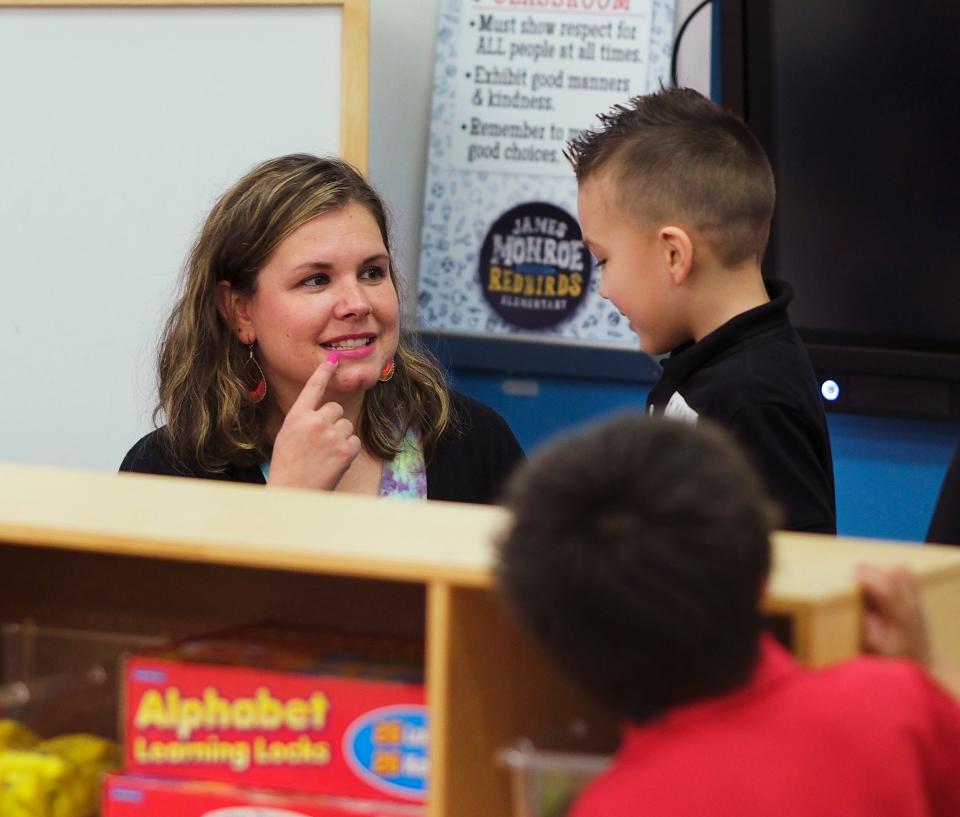
This points the state in the right direction toward resolving its yearslong teacher shortage, said Cari Elledge, vice president of the state's largest teacher union, the Oklahoma Education Association. Educators are excited about the raise, Elledge said, but Oklahoma still has a ways to go in fostering public respect for the teaching profession.
“As far as the teacher pay raise, I personally know from talking to educators across the state it’s encouraged a lot of people to stay," Elledge said.
Teacher turnover hit its highest rate in a decade at 24% last year, according to the state Education Department. In response, Walters announced signing bonuses of up to $50,000 for teachers who agree to move to Oklahoma from others states or who return to the classroom after time away. Funds won't be distributed for those bonuses until September, according to the state agency.
The incentive to stay in the classroom is perhaps greatest for educators nearing retirement. The average salary of their final three years of service is a key factor in determining their retirement benefits.
That could give Oklahoma a three-year runway to recruit more teachers while retirements temporarily slow.
"Big picture, it’ll move Oklahoma’s average teacher salary to a little over $60,000 a year," said Shawn Hime, executive director of the OSSBA. "But that impact for recruiting new teachers to the profession, to our schools is probably at least a year out."
What can Oklahoma schools do to help mental health?
The pandemic unquestionably dealt a blow to the mental and emotional wellness of America's young people, with some of the top pediatric health organizations declaring children's mental health a national emergency in 2021.
In Oklahoma, the number of middle and high school students reporting high levels of psychological distress increased to 32% during the 2021-22 academic year, according to the state's Prevention Needs Assessment. Anectdotally, teachers noted an apparent rise in behavior issues within their schools.
Students experienced isolation and a lack of connection — factors known to contribute to mental health struggles — on a much broader scale during the pandemic, said Jessica Hawkins, director of community and systems initiatives at Healthy Minds Policy Initiative.
Hawkins said the issue is still urgent, and now is the time for a coordinated effort to address these challenges.
"Fortunately, we’re at a place in the mental health field that we happen to know a lot about what works in preventing and treating mental health problems," Hawkins said. "And so, it’s less of an issue of knowing what to do, and it’s more of an issue at this point of quickly organizing and creating these plans and putting them in place."
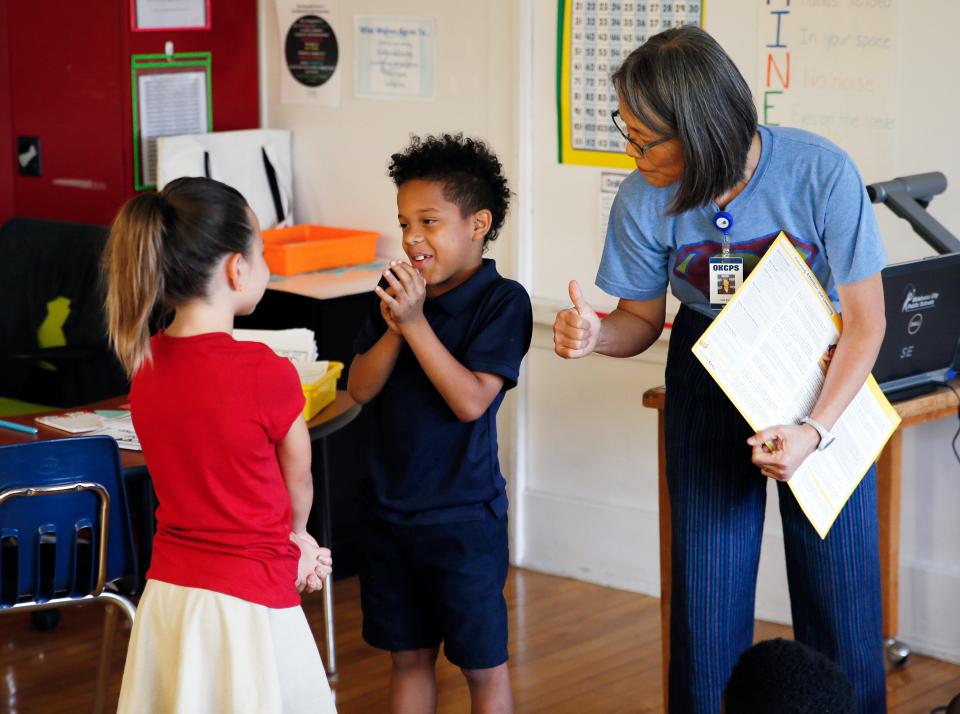
Schools are integral to that initiative. Among all U.S. students who receive mental health services, an estimated 80% access those supports at school, Healthy Minds stated in a 2022 report. Developing strong bonds with family at home and with peers and adults at school is crucial to boosting a student's mental health, according to the Centers for Disease Control and Prevention.
More Oklahoma schools have adopted a research-supported framework for school counseling, called Multi-Tiered Systems of Support (MTSS), according to Healthy Minds research. About 130,000 of Oklahoma's 700,000 public-school students attend a school or district funded and equipped to implement the MTSS approach.
The MTSS plan involves universal mental health screenings and classwide instruction by school counselors on mental health and substance abuse issues. Students with emerging needs could receive small-group therapy sessions and, should issues escalate, a crisis response or a recommendation for in-patient care.
A new law took effect last year that requires all Oklahoma school districts to create a mental health crisis response plan with their local behavioral health clinic.
While preparations grow locally, state-level supports for mental health efforts appear to dwindle. Pandemic aid funding that put 300 more counselors and mental health professionals in public schools will end after this school year.
The state Education Department's Office of Student Supports, which focused on these initiatives, has lost half its staff since Walters took office. Former employees complained the agency's grant-funded work on student behavioral health had all but ceased.
Academic acceleration the focus in Oklahoma City Public Schools
The pandemic left its unfortunate imprint on academics, as well. State testing in 2022 showed improvement over 2021 results, but only about a quarter of Oklahoma students scored at their grade level in reading, math and science.
In Oklahoma City Public Schools, the 2022-23 academic year was the first without any COVID-related school closures since the pandemic began. That was "very, very huge" for students and teachers, said Jamie Polk, the district's assistant superintendent of elementary schools.
For Polk, academic acceleration is the focus, not recovery. Students can't recover something they never had, she said.

The Oklahoma City district saw promising growth at some of its schools where administrators tried out turnaround strategies — deep dives into benchmark test data, extra hours of professional development for teachers and principals, and involving students in tracking their academic progress.
This year, more administrators and principals are training in these practices. Every school in the district already has students review their own quarterly benchmark scores. Schools that execute this student participation well performed better overall, Polk said.
More: How is OKC turning around low-performing schools? More data, training and accountability
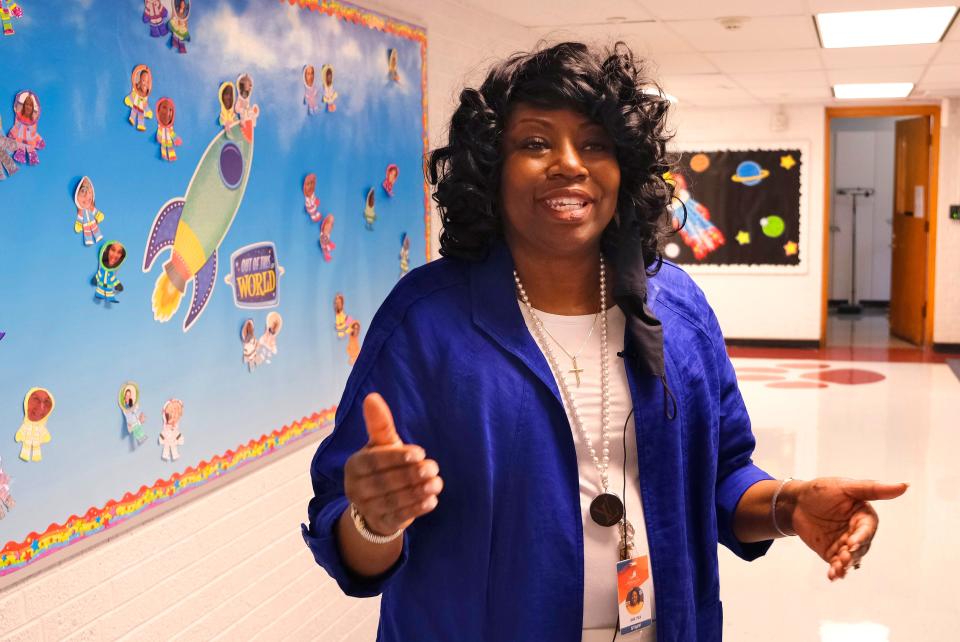
Six Oklahoma City elementary schools incorporated a "plus two" concept that encourages teachers to introduce academic standards two grade levels ahead.
Even this is tailored for each student, Polk said. It would bring some children into advanced territory. For others, two grade levels might be how far they have to catch up.
"I'm going to be honest with you; Oklahoma, we were ranked amongst the bottom," Polk said. "That was before the pandemic. So, no matter what, we had to put our foot on the gas and do some acceleration."
Editor's Note: This story has been updated to correct a statistic on student mental health services. An estimated 80% of all U.S. students, not only in Oklahoma, who receive these services access those resources at school.
Reporter Nuria Martinez-Keel covers K-12 and higher education throughout the state of Oklahoma. Have a story idea for Nuria? She can be reached at nmartinez-keel@oklahoman.com or on Twitter at @NuriaMKeel. Support Nuria’s work and that of other Oklahoman journalists by purchasing a digital subscription today at subscribe.oklahoman.com.
This article originally appeared on Oklahoman: It's almost time for back to school. What's new in Oklahoma education?

